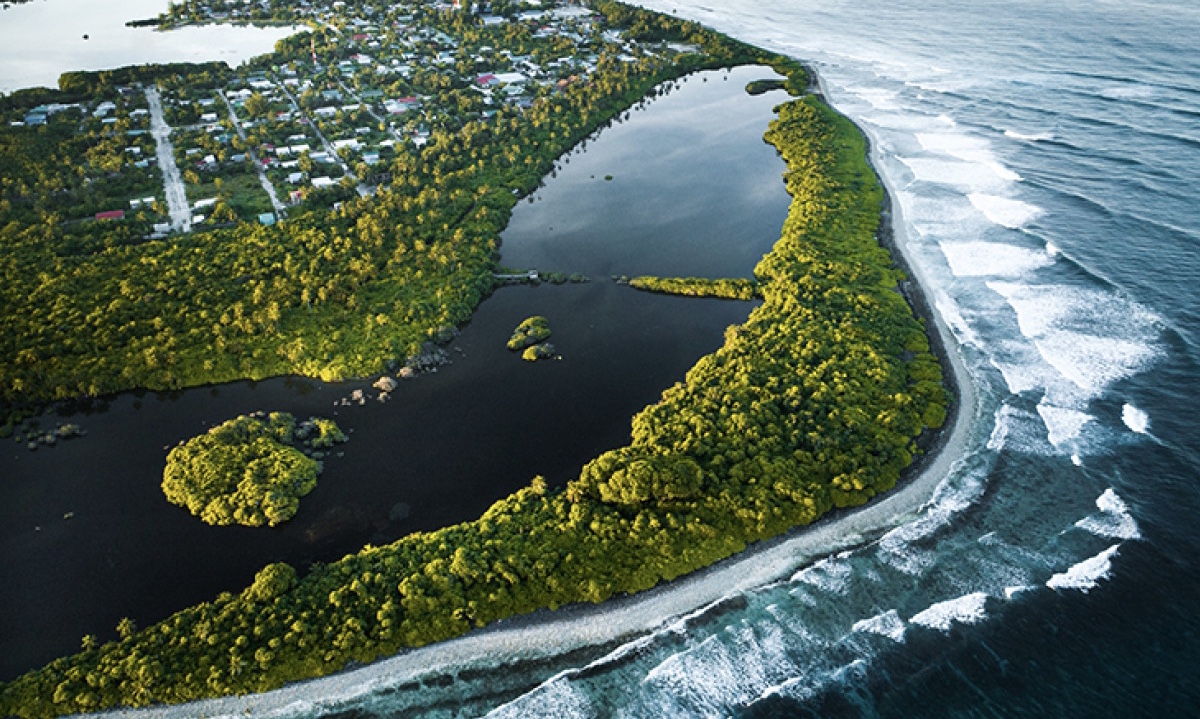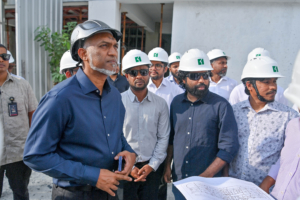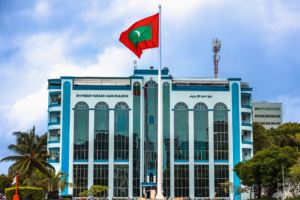Addu City, a heart shaped pendant at the very bottom of the pearl necklace in the middle of the Indian Ocean, which is Maldives, is home for some 33,000 people, areas of dense vegetation, and rich marine ecosystems, along with thousands of migratory birds that flock out to the South during winter.
This beautiful little green dot in the middle of the deep blues is where I call home. When they say home is where the heart lies, this heart shaped atoll truly embodies every bit of what home is truly like – not only for me, but for anyone who visits. Addu, for generations has been known for its rich history and its pristine environmental surroundings. It is due to this very reason, that Addu has been recognized as one of the UNESCO Biosphere Reserve applications which was successful this year.
On 28th October 2020, Addu officially became a Biosphere Reserve. As much as I knew how imaginative it was, how I envisioned living in a Biosphere Reserve was far fetched from what it may seem to some of you. My initial thoughts ran down lanes of a dreamy, clean island, with a constant fresh sea breeze, as waves splash on to the beach and leaves rustle away as I make my way onto work. While most this is still true to this day, what I deemed impossible at the time, was the bubble I imaged that would surround Addu, protecting it from any harsh conditions that may come its way.
But as I planned to write this, I realized that nothing about that bubble is a figment of my imagination. That bubble I envisioned, is the hard work put in, determination and faith, and love for the environment the people of Addu have harbored within their warm hearts, to preserve and protect the natural resources within our home.
Today as we celebrate Addu becoming a Biosphere Reserve with pomp and glee, we must remember, that it is the result of so many hard working individuals, who without wanting credit, simply worked with nothing but true admiration and dedication towards nature, which has resulted in our home becoming internationally recognized, yet for another positive cause. As someone who has witnessed the work of the Addu Nature Park crew and everyone behind the Climate Change Adaptation Project (CCAP) in making this happen first hand, today, we owe it to them for making Addu’s name shine bright on international platforms. We also must remember the non profit organizations, and independent groups of friends and neighbors who gather around to make our beaches a little bit more cleaner and our lands a little more greener everyday.
But most importantly, we owe it to the generations that came before us, who handed us all of nature’s gifts in the pristine conditions we see today. The calm lagoons we enjoy when out on a paddle, the lush of vegetation that reward us with cool, fresh air, the birds that soar above us like angels singing to us every day, the colorful underwater world we dive into, for an escape from our everyday troubles – are all precious gifts handed over to us, which we must carry forward for our children as well.
So how will it really be like to live in a Biosphere Reserve? As dreamy as my description about life in Addu may seem, for me and many others, this is the paradise we enjoy, but take for granted. Counting day one living in a Biosphere Reserve, I can assure you nothing magical has happened since the 32nd session of the UNESCO International Coordinating Council of the Man and Biosphere Program declared Addu among the Biosphere sites.
But just for the sake of getting an expert opinion on the matter, I spoke to Ms. Aishath Farhath Ali (Fara), who just so happens to be the Assistant Director at the Environmental Protection Agency (EPA). According to Fara, living in a Biosphere Reserve is all about co-existing, learning and protecting our home, as we have continued to do so.
“Nothing has to change! We just have to continue protecting our home as we, and our forefathers have been doing so all along. It is the hard work of Addu people that has taken the city this far. Today, we simply got the recognition for it” she said.
Fara explained to me, that a Biosphere Reserve simply consists of three main areas – the core area, the buffer zones, and the transitional zones, out of which, the core areas are the zones within the city which have already been declared as legally protected, way before as became a Biosphere Reserve. The other two areas are the areas in which we live in and that which surrounds the atoll.
But rest assured, none of these fancy technical terms are going to change the way we live. We can still go fishing, still go kayaking, snorkeling and diving – we can basically carry on with our lives as we have. We just simply have to make sure that our actions only bring positive changes to our surroundings. Just make sure that bubble surrounding our home, which is driven by our love for nature remains intact, and everything is going to be alright.





